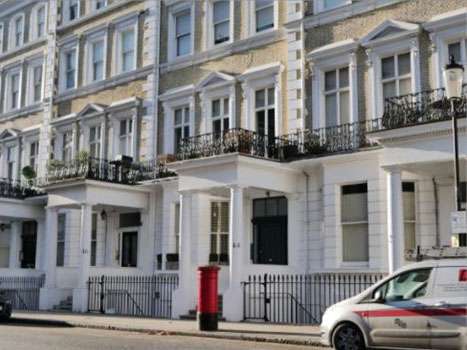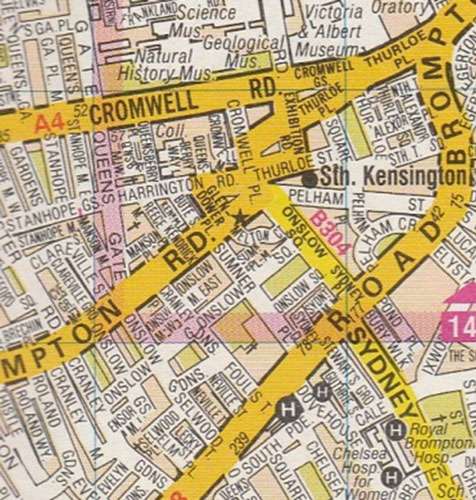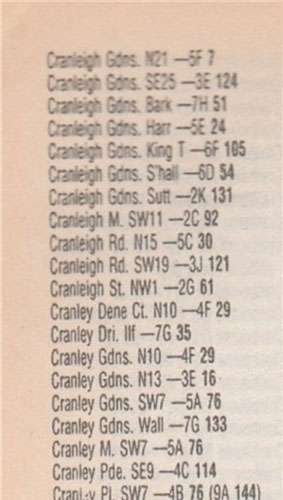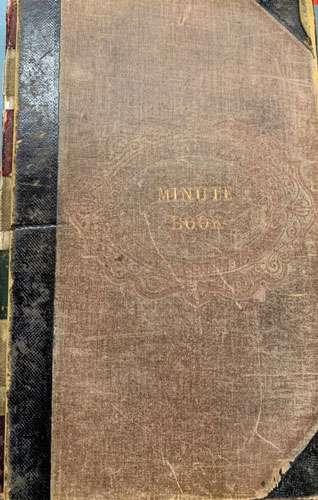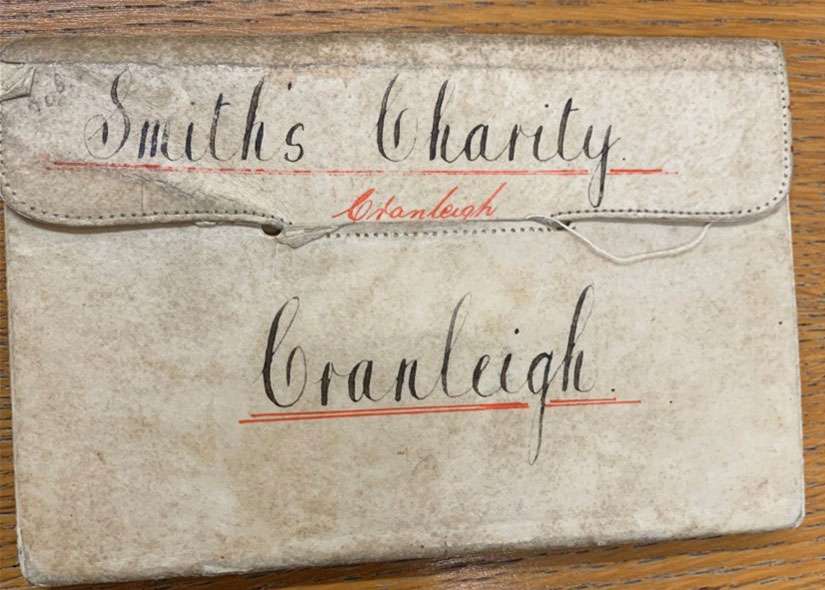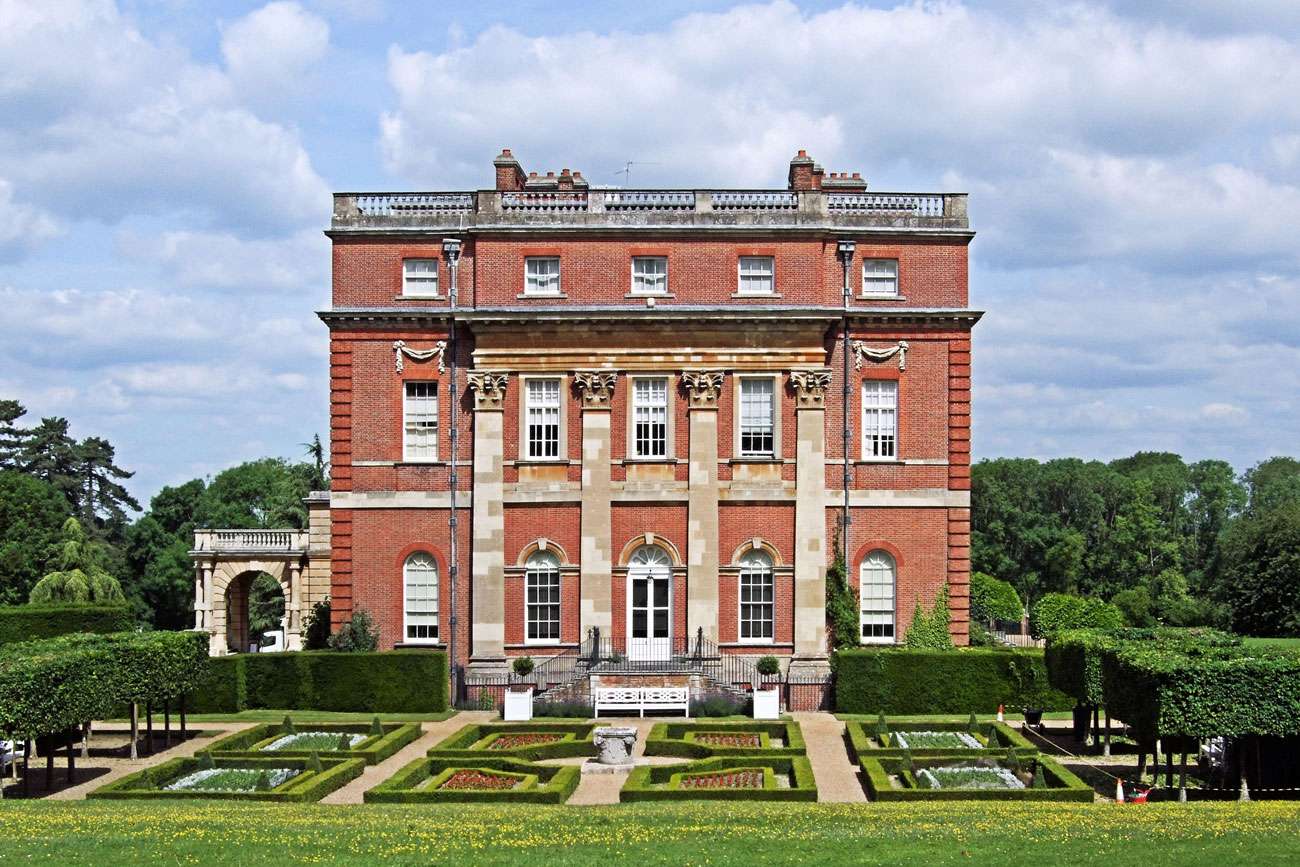
Clandon Park (National Trust) before the disastrous fire in 2015
A friend of mine lived in Cranleigh Road, Worthing. Why was her road called after our village? It turns out that it is not alone. There are roads in towns and villages all over the country that also boast our name. In the London A-Z there are more than a dozen called Cranleigh Close, Gardens or Road, and ten or so called Cranley Dene, Drive, Gardens, Mews, Parade, Place or Road (using the spelling of Cranleigh before 1867). How very odd! It would take a lot of time and energy to research each one and discover why it was called this.
However, it took only a little research to discover the story behind Cranley Gardens, London SW7, which leads off Old Brompton Road in South Kensington. It turned out to be unexpected. Cranley Gardens leads into Onslow Square, and this provides the first clue. ‘Cranley’ in this case is not commemorating our village, but the distinguished family that lived at Knowle in Cranleigh for some 150 years.
Cranley Gardens, London SW7: rather different from Cranleigh, GU6
A Richard Onslow came to Cranleigh around 1549, when he married the Knowle heiress. He became Speaker of the House of Commons, and started an Onslow parliamentary tradition, with two of his successors also serving as Speaker. Cranleigh proved too small for the Onslows’ ambitions, and too difficult of access to London. So the family moved near to Guildford, and built the magnificent Clandon Park around 1730. In 1801 George Onslow was created earl of Onslow and so was granted a coat of arms. He didn’t forget the family’s origins, though, and one of his titles was Viscount Cranley. The name ‘Cranley’ was occasionally given as a forename to an eldest son in the family, and Cranley Onslow was MP for Woking, 1964-97. The family severed their links with Knowle when it was sold around 1815.
So ‘Cranley Gardens’ is using one of the titles of the earl of Onslow.
Cranley Gardens and Cranley Mews are in the bottom left-hand corner, together with many streets named after aristocrats
This identification has further interest for Cranleigh. On the London street map it can be seen that around Cranley Gardens and Onslow Square are streets commemorating other aristocrats, with names like Egerton, Lennox, Pelham, Sumner and Sydney. This is clue number two. The common link between them is that when these streets were built, these men were jointly trustees of a body called the Henry Smith Charity.
Henry Smith was a wealthy alderman of the City of London who died in 1628. His fortune, oddly enough, was based on trading in salt. He lived near the great Smithfield Market, where vast numbers of cattle, sheep and pigs were traded daily. Here was a ready market for Henry Smith’s commodity, as salt was the main preservative of meat. This made him moderately rich. He used his money to make loans to noble and landed families, and became enormously rich. By the 1620s, he owned or controlled estates consisting of thousands of acres in at least eight English counties.
Cranleigh and Cranley in the London A-Z (1995)
Being childless, Henry Smith set up various charitable trusts. One of these was for ‘the relief of the poor, the sick and the elderly’ of 202 English parishes. The story goes that he used to walk around the countryside disguised as a tramp, and those villages that treated him kindly were included in the list. This story should be taken with a pinch of Henry Smith’s own commodity, as the parishes were in fact chosen by his first trustees. Many were in Surrey, where Henry Smith had been born, and happily Cranleigh was among them.
One of the trustees’ investments, soon after 1628, was in 84 acres of boggy land in the village of Kensington, then consisting mainly of market gardens. From the 1840s, as London expanded westwards, this area was built up into elegant stuccoed terraces. The value of those boggy market gardens rocketed.
The Minute Book of the Smith’s Charity, Cranleigh, dates from 1894
The money received by each of the 202 parishes has down the years been distributed by the churchwardens or local trustees. Occasionally the distribution here was mentioned in the Cranleigh Parish Magazine. For example, in 1898 249 Cranleigh families received lengths of 36-inch calico – a total of 1,462 yards of material, costing 3d per yard. How many smocks or nightshirts would that make? The next year flannelette was substituted, ‘as being more useful’. In 1921, ‘provisions’ were given to Cranleigh war widows. In 1950, vouchers were allotted to parishioners in need, which ‘could be taken to local shops to obtain necessities or coal’ – but could not be spent on alcohol! More recently, the Charity made a grant to the local Food Bank. Nowadays, the Cranleigh committee of the Henry Smith Charity receives £5,000-£6,000 a year. It makes grants under the scrutiny of the national trustees, who distribute £25m each year.
Hundreds and thousands of poor, sick and elderly people have benefited, and still benefit, from the will of a salt merchant and money-lender who died nearly 400 years ago.
The cover of the Minute Book of the Smith’s Charity, Cranleigh (courtesy of Nigel Sanctuary, chairman of the Parish Council, and Brian Cheesman, chairman of the Smith’s Charity)
The Cranleigh History Society meets on the second Thursday of each month. The next meeting will be on Thursday May 12th at 2.30pm, and will be a guided visit to Betchworth Castle.

